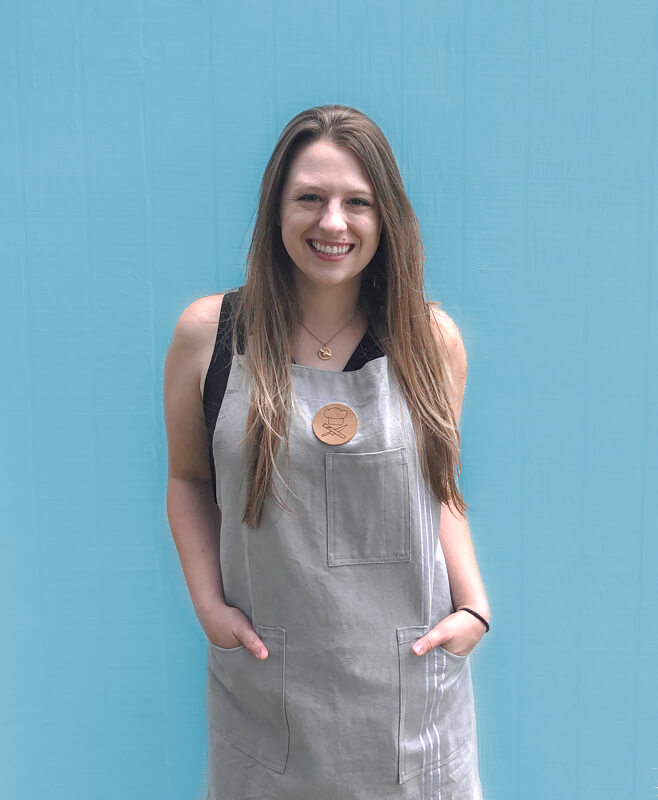Laura the Gastronaut > Julia Child > Poultry >
Poulet RotiRoast Chicken
April 3, 2019 | Updated March 13, 2023 | Laura
*This post may contain affiliate sales links. Please see full disclosure policy for details.
*The views expressed on this blog are my own.
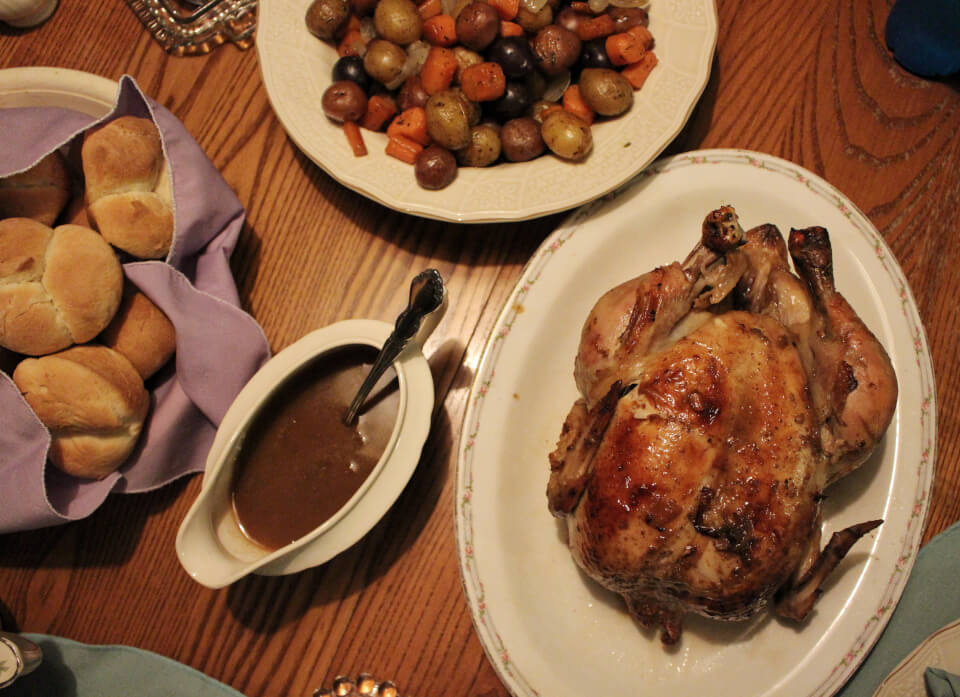
✽ Recipe from Mastering the Art of French Cooking, Vol. I | Julia Child ✽
Julia Child Recipes 1-3 | 525 recipes to go!
✽ Roast Chicken [Poulet Rôti], p. 240
✽ Whole Boiled Artichokes [Artichauts au Naturel], p. 424
✽ Lemon Butter Sauce [Beurre au Citron], p. 98
__________________________________
✽ Mastering the Art of French Cooking, Vol. I was written by Julia Child who co-authored with Simone Beck & Louisette Bertholle and was published by Alfred A. Knopf in 1961.
✽ You can buy Julia Child's Mastering the Art of French Cooking, Volume I which contains these recipes here. (affiliate link)
The purpose of this Julia Child section of my blog is to document my journey of learning how to cook. To show my successes, my failures, and what I learned along the way.
Since I didn't create these recipes (if only!), I do not post exact amounts of ingredients or word-for-word instructions. If any of these recipes spark your interest, I highly recommend you buy Julia Child's Mastering the Art of French Cooking (affiliate link). It's a great investment and learning tool and contains hundreds of classic recipes.
What you will find on my blog is:
✽ Butter Count & Cost Total
✽ How the Recipe Tasted
✽ Answers to Questions about Recipe
✽ Fun Facts about Recipe or an Ingredient Used
✽ The Recipe Process
✽ Step-by-Step and Final Photos of Recipe
I hope that you enjoy reading my thoughts, learn something new, and leave inspired to try a new recipe. Bon appétit!
__________________________________
Butter Count & Cost: Poulet Roti & Artichokes
✽ Butter Count: +14 TB
✽ Cost: $24.33 [~$9.11 per serving]
- Roast Chicken= $3.74 [4 servings]
- Whole Boiled Artichokes= $17.99 [6 servings]
- Lemon Butter Sauce= $2.60
Check out the total Julia Child butter count & cost here!
→ Looking for a different Julia Child recipe? Here's a list of all of the completed and pending Mastering the Art of French Cooking recipes!
A classic & delicious roast chicken recipe.
I definitely have had the cooking bug since I received this cookbook last month, and I knew I had to get started at some point, so why not today?
I decided to tackle the good ol’ classic roast chicken. The first recipe in the Poultry chapter of Mastering the Art of French Cooking. Now, I naively thought this would be a non-stressful first recipe. Well, that was until I read Julia Child’s words, and I quote, “You can always judge the quality of a cook or a restaurant by roast chicken.”
The pressure was there but the show must go on as the pasture-raised chicken that I got from Blackland Farm & Cattle (Waco, TX) was already defrosting in the fridge.
My mother also helped complete the meal by making the tiny colorful roasted potatoes, homemade rolls, and a delicious chocolate torte topped with raspberries.
If you are looking for a delicious and simple roast chicken recipe then look no further. This recipe will give you a perfect roasted chicken every single time!
Roast Chicken: Questions
✽ What sides should you serve with roast chicken?
I served mine with potatoes, rolls, and artichokes dipped in lemon butter. The cookbook reccomends serving with broiled tomatoes, green beans, peas, and/or potatoes. For wine, go with a light red or rosé.
✽ Why do you baste the chicken every 8-10 minutes when roasting?
Basting the chicken every 8-10 minutes while it is roasting seems like a lot, and, truthfully, it is a lot. You want to make sure you are basting really quick or else you'll lose a lot of heat out of the oven.
I've made roasted chickens where you baste a lot and I've also made chickens were you put it in the oven and barely touch it until it is fully cooked. Both are good, but the frequently basted one is superior.
The basting keeps the chicken from drying out. Everybody loves a juicy chicken. The hot fat within the basting liquid can also help the skin get crispy.
✽ How do you know when the chicken is done cooking?
The best and easiest way to determine the chicken is fully cooked is by using a meat thermometer. You always want the chicken to reach at least 165°F. Make sure to check the temperature of multiple parts of the chicken when determining doneness (breasts and thighs).
Some people like to continue cooking whole chickens until about 180°F. This allows the chicken thighs (dark meat) to become more tender.
The cookbook says the chicken is done when the juices are clear yellow. However, this isn't a very reliable way of testing doneness nowadays. According to America's Test Kitchen, juices can run clear before the chicken is done. There were also instances the juices were still pink even after the chicken was overcooked. The exact temperature that the juices will be clear depends on many things such as how the chicken was raised and processed. Therefore, it's best to use a meat thermometer when cooking!
Looking for more Julia Child chicken recipes to read about?
→ Check out all of the poultry recipes that I've completed so far!
Fun Facts about Artichokes
*Find these facts plus lots more on Wikipedia and AgHires.*
✽ What is an artichoke?
An artichoke is an edible portion of a plant that is a variety of a species of thistle. The part we eat is actually the flower-head before it blooms. It consists of many budding flowers surrounded by bracts (specialized leaves) on an edible base. After the flower blooms, it becomes mostly inedible.
✽ Which country produces the most artichokes?
Italy produces the most artichokes followed by Egypt and Spain.
✽ How many artichokes can a plant produce?
Each individual plant can produce 15-20 artichokes every year.
✽ When did artichokes get to America?
Artichokes were brought to America in the 1800s and were first grown in Louisiana by French immigrants and in California by the Spanish. Almost all of the artichokes grown in the United States today are grown in California.
How to Make Roast Chicken
✽ Step 1: Truss Chicken

I started with my first ever trussing of a chicken. It is oddly satisfying to sew together a chicken and a little disturbing. I could see why somebody would want to skip this step but Julia says to so who am I to say no? She states this step makes for a “neat and attractive appearance on the table.”
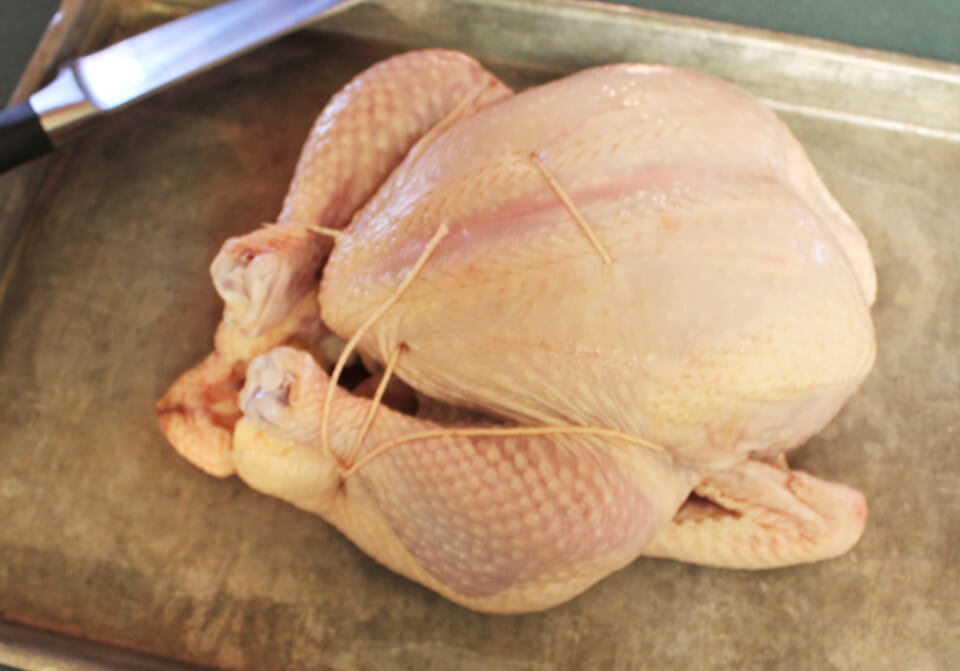
Look at that beautifully trussed chicken. I had to make a couple extra stitches since my needle was not long enough. I suppose I’ll need to invest in an actual trussing needle if I keep this up.
✽ Step 2: Butter Chicken, Add Vegetables, & Roast
Next, I just slathered some butter on the outside, placed a carrot and onion around the chicken, and placed it in the oven.
The whole time this chicken was cooking, I was saying “this is one needy chicken,” and it was indeed one needy chicken. You first have to baste with a butter and oil mixture every 5 minutes for 15 minutes and then you’ll baste it every 8-10 minutes for about 2 hours.
NEEDY, but I’d later tell you, WORTH IT. Julia knows what she’s talking about after all. Not like anybody was questioning her in the first place.
✽ Step 3: Make Sauce
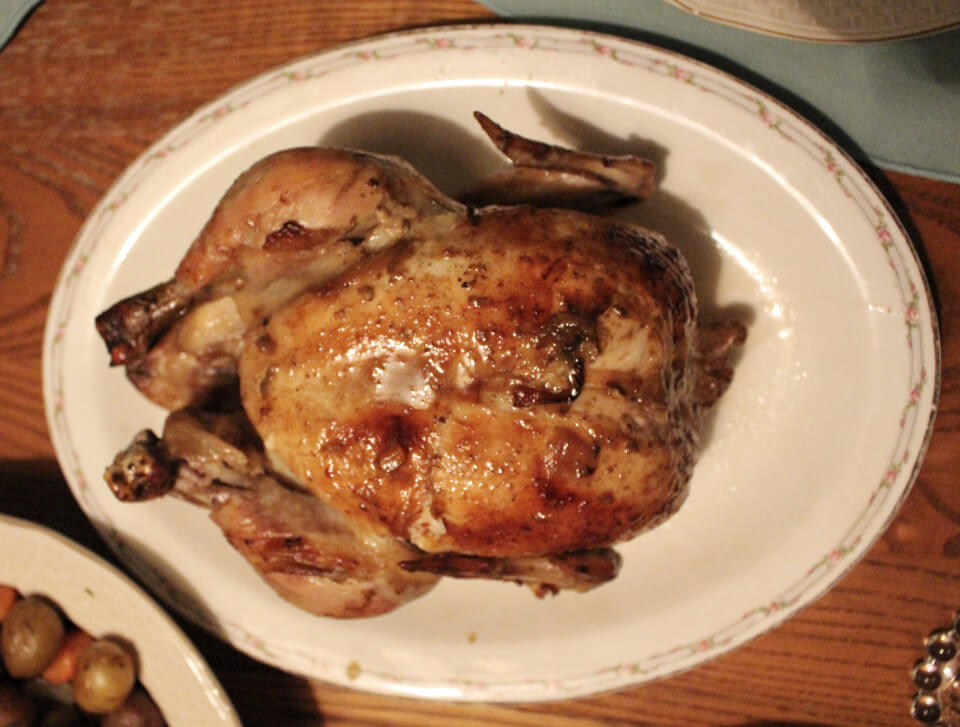
What an attractive chicken. I will say this though- do not skip making the sauce at the end of the recipe. I repeat, do NOT skip making the sauce.
The sauce made the dish, and it’s literally just reduction of the juices from the chicken itself, butter, the carrot and onion from earlier, and chicken broth.
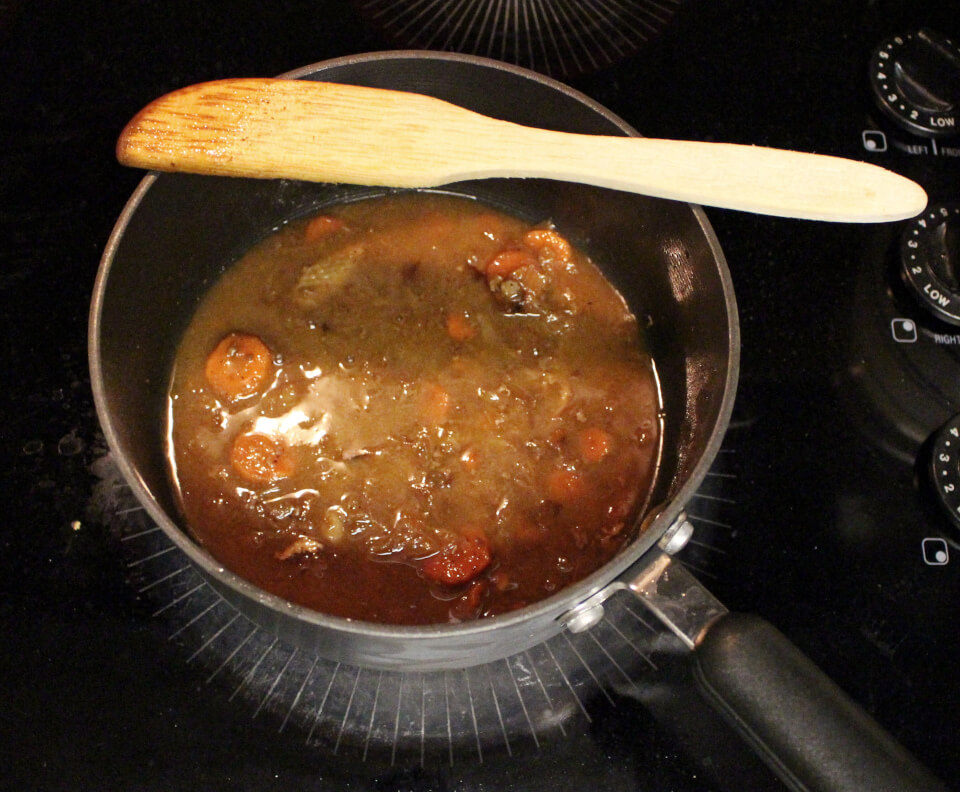
It’s salty, it’s rich, and it’s wonderful. The key to perfecting this dish.
How to Make Boiled Artichokes
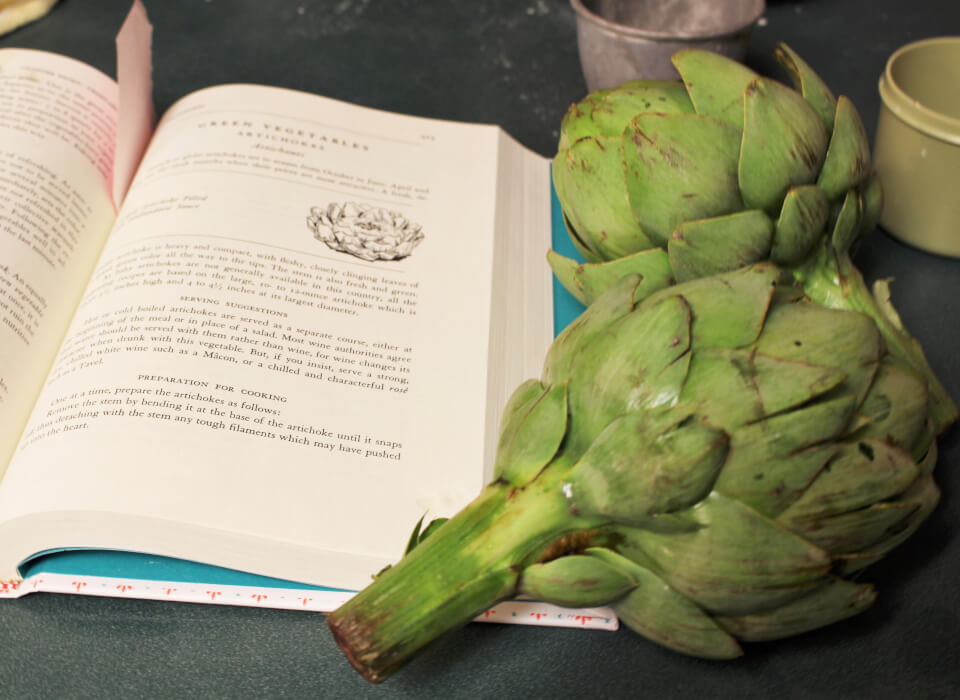
Next, I decided to make artichokes dipped in a lemon butter sauce. Before today, I had never cooked an artichoke. I had actually never even eaten an artichoke before. Well, besides spinach and artichoke dip. But does that count?
Artichokes are funny looking vegetables but simple to make. The hardest part is literally figuring out how to eat them. You have to put the leaf in your mouth, bite down, and scrape off its tender flesh between your teeth. Then, after the leaves are taken off, there’s the heart and the bottom which are pretty good eatin’.
Julia says there’s something called the choke which is a “hairy growth” that is not supposed to be edible, but we could not find it? Oh well. I’d love to hear others’ experiences with eating artichokes for the first time! Edit- After making another artichoke recipe, I most definitely found the choke. It's lots of 'hairs' inside at the bottom which I assume would be the flower if the artichoke hadn't been picked prior to blooming. Not quite sure how we all missed seeing this the first time..
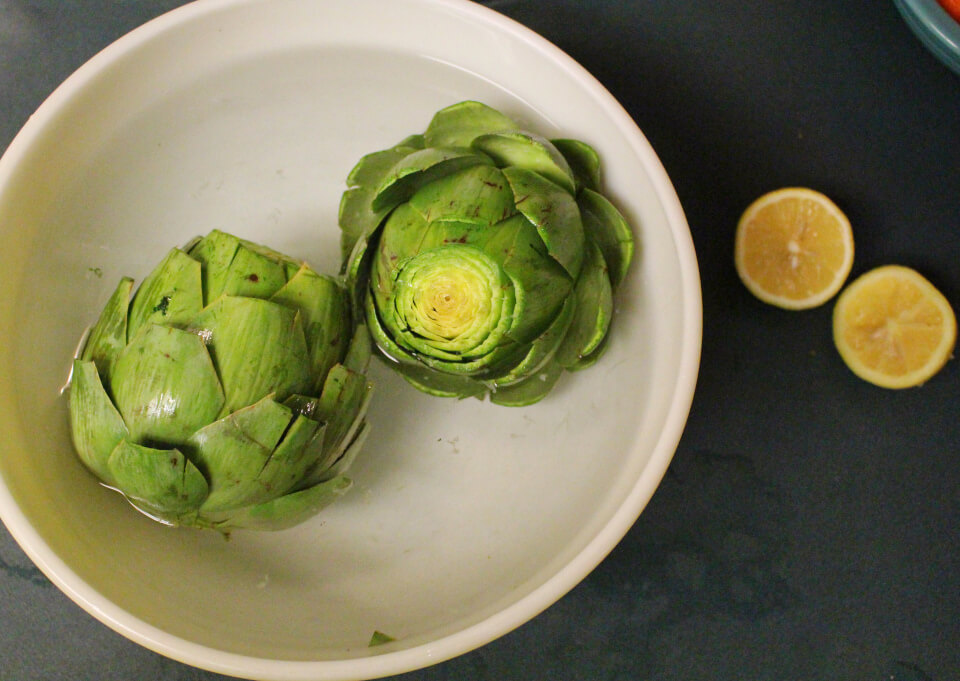
Back to cooking, you begin by breaking off the stem of the artichoke and cutting off the pointy tips of the leaves. Rub them down with lemon and place them in a bowl of water with vinegar to prevent browning. You place them in a pot of boiling water for about 40 minutes and BAM, done.
How to Make Lemon Butter Sauce
✽ Step 1: Boil Lemon Juice
Next, make a sauce for the artichokes. Completely worth it. I hear hollandaise is really good on artichokes, but I decided not to overwhelm myself on the first day so I went with the lemon butter sauce- a lemon juice reduction with A LOT of butter. Julia mentions a few things this sauce would be good on, but I personally think it would be good on a lot of things- artichokes, meat, bread, potatoes, by itself (kidding, maybe…).
This sauce is very simple to make! Lemon juice and seasonings are boiled until reduced.
✽ Step 2: Beat in Butter
Next, an entire stick of butter is beaten into the reduced juice until it becomes thick and creamy.
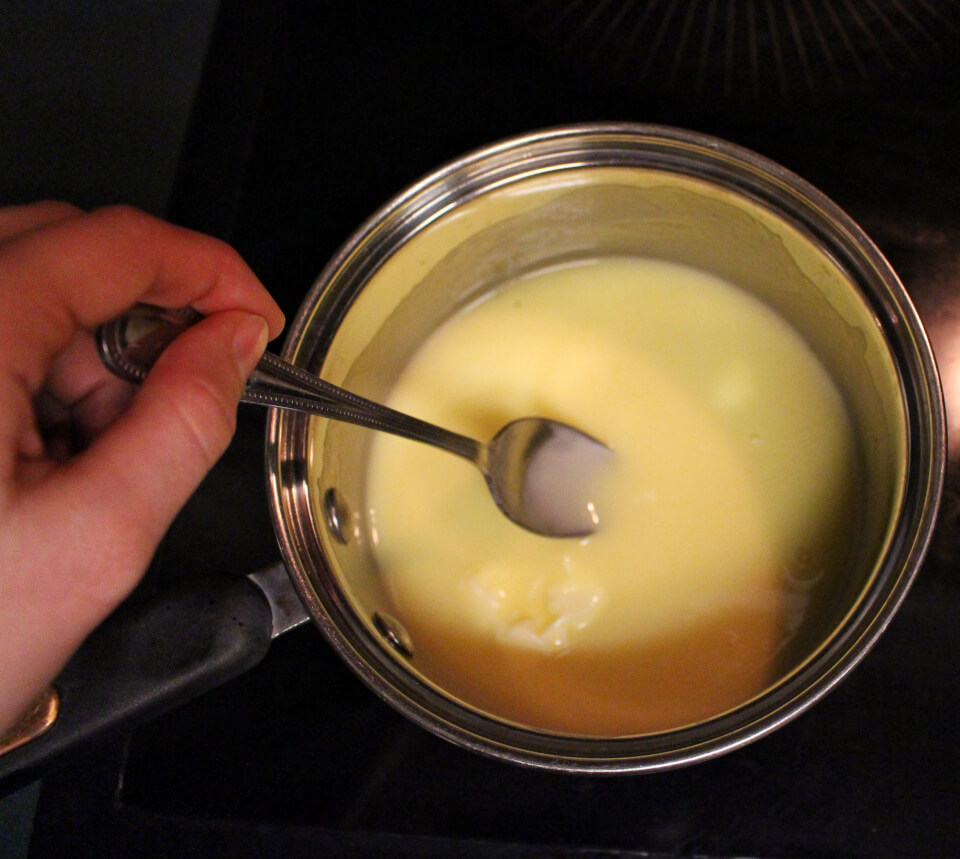
✽ Step 3: Beat in Hot Liquid
In order to ensure the butter sauce is warm, just a bit of hot liquid is beaten into it right before serving.
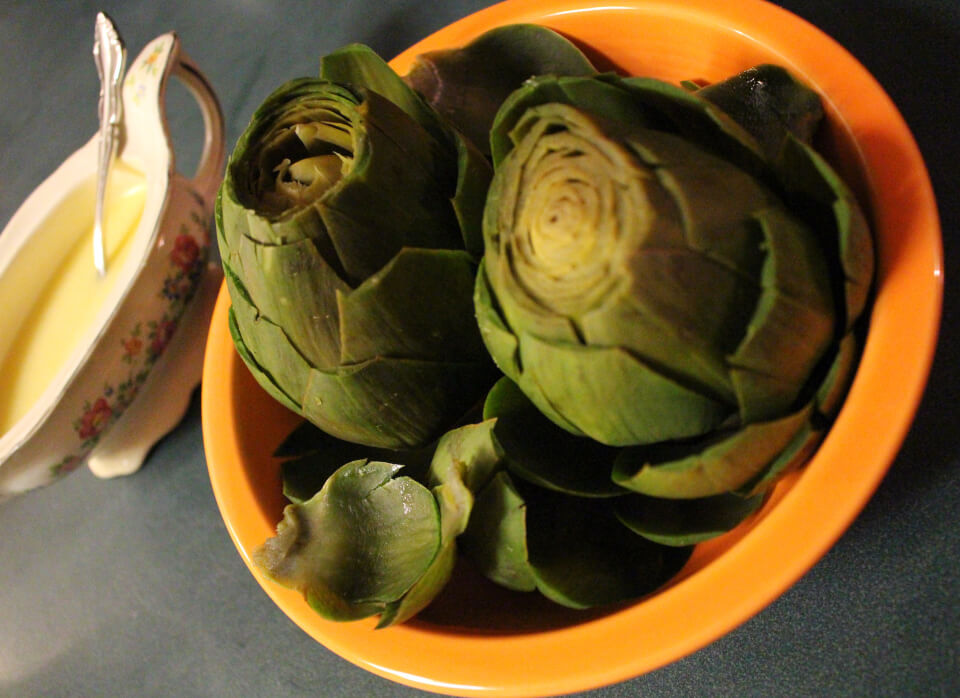
So, there you have it- my first three Julia Child recipes, and they did not disappoint. Delicious, buttery, and perfect. Just like a Julia Child recipe should be.
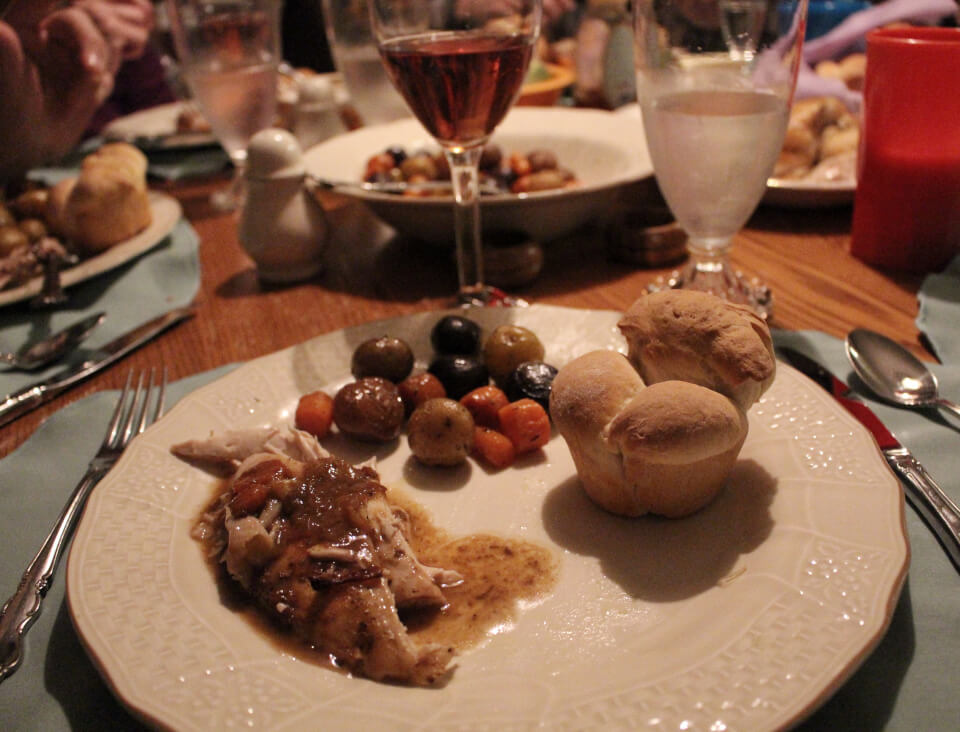
I’ll have to say, I’m pretty proud of myself and excited to continue on. I’ll leave you here with my mom’s chocolate torte (not a Julia Child recipe). It was simply amazing- so chocolatey, so rich, and the perfect ending to a delicious French meal.
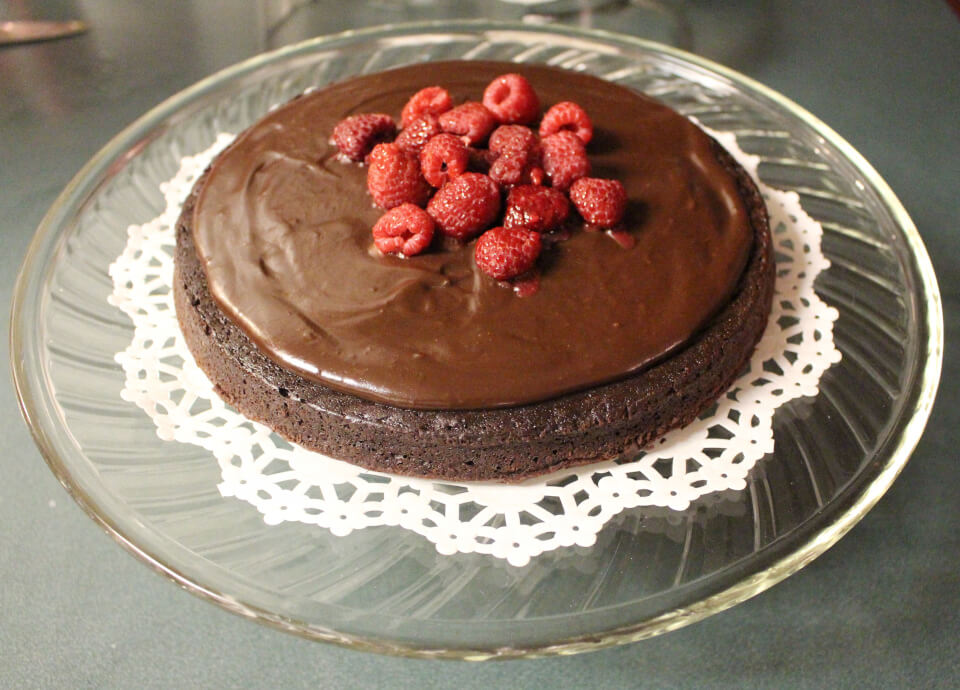
Edit: These pictures are.. not great. I apologize. When making these early recipes I was working in an extrememly tiny kitchen that had pratically zero counter space and very poor lighting. My only saving grace was that somebody once had one of those pull-out cutting boards installed. What a life saver.
I was also in pharmacy school, getting minimal sleep, working for free, completely broke, didn't know the first thing about taking photos, and knew practically nothing about French cooking (or cooking in general for that matter).
I've debated taking these old posts down but decided to keep them up because they are all a part of my journey. These photos and my written struggles remind me how far I've come!
You don't need fancy equipment or the finest ingredients to enjoy cooking and make good food. As one of my favorite cartoon characters, Ms. Frizzle, says, "Take chances, make mistakes, get messy!"
*This blog, Laura the Gastronaut, and this post were/are not endorsed or supported by Julia Child or The Julia Child Foundation.
Category: Julia Child, Poultry, Sauces, Vegetables Cuisine: French
Keywords: julia child artichoke recipe, julia child roast chicken recipe, poulet roti julia child, julia child roasted chicken recipe
✽ Did you make this recipe too?
→ Let me know by leaving a comment below and sharing on Instagram. Tag @laurathegastronaut and hashtag it #laurathegastronaut.
More Chicken Recipes:
✽ Casserole Roasted Chicken with Tarragon (this roasted chicken is a must for all that love tarragon)
✽ Poulet Roti a la Normande (same delicious roast chicken but with a delicious cream sauce and amazing giblet stuffing)
✽ Poulet au Porto (tasty roast chicken steeped with wine, cream, and mushrooms)
→ Check out all of the completed Julia Child chicken recipes!
✽ You can find this recipe and all the other Julia Child recipes I make in Mastering the Art of French Cooking, Volume I (affiliate link).
→ Mastering the Art of French Cooking, Vol. I was written by Julia Child who co-authored with Simone Beck & Louisette Bertholle and was published by Alfred A. Knopf in 1961.
✽ Check out my Julia Child Recipe Checklist to see a list of all my completed and pending recipes from Mastering the Art of French Cooking!
Bon appétit!
April 3, 2019 by Laura Ehlers
*This Poulet Roti blog post may contain some Amazon affiliate links. These link to products that I personally use and recommend. If you purchase anything using my links, it will not cost you anything. It will though give laurathegastronaut.com some financial support which helps me keep this blog running. Thank you for reading my blogs and your continued support.

